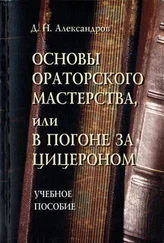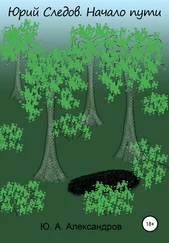567. Sharpless S., Jasper H. Habituation of the arousal reaction //Brain. 1956. V. 79. P. 655.
568. Shvyrkov V. В . Behavioral specialization of neurons and system-selection hypothesis of learning //Human memory and cognitive capabilities. Amsterdam: Elsevier. 1986. P. 599.
569. Siegfried В ., Netto C.A., Izquierdo, I. Exposure to novelty induces naltrexone-reversible analgesia in rats //Behavioral Neuroscience, 1987. V. 101. P. 436-438.
570. Simonov P. Parameters of action and measuring emotions //Emotions: Their Parameters and Measurement. New York: Raven Press. 1975. 421 p.
571. Simonov P. The need-informational theory of emotions //Intern. Journ. Psychophysiol. 1984. V. 1. № 3. P. 277.
572. Simonov P. The Emotional Brain. New York-London: Plenum Press. 1986. P. 267.
573. Smith S.M., Brown H., Toman Y., Goodman J.S. Lack of cerebral effects of D-tubocurarine//Anesthesiology. 1947. V. 8. P. 1.
574. Snyder P., Scott J. The psychophysiology of sleep. Handbook of Psycho-physiology. N.Y.; Hott. 1972.
575. Sokolov E.N. Foreword //of R. Naatanen. Attention and brain function. XI–XV. Lawrence Eribaum Associates, Inc., Publishers. Hillsdale, New Jersey. 1992. 494 p.
576. Sokolov E.N. Vector coding in neuronal nets: color vision //Brain and self organisation. Hillsdale: Lawrence Eribaum Ass.Publ. 1994. P. 463.
577. Sperry R.W. Perception in the absence of the neocortical commisures // Pwerception and its disorders. Balfltimore: William Wilkins. 1970. P.123.
578. Spinelly D.N. OCCAM: A computer model for a content addressible memory in the central nervous system //The biology of memory. N.Y. – London. Acad. Press. 1970. P. 293.
579. Spinelly D.N. Neural correlates of visual experience in single units of cats visual and somatosensory cortex //Frontiers in visual science. N.Y. Springer. 1978. P.674.
580. Squire L.R. The biology of memory. Verlag. 1990.
581. Squire L.R. Declarative and nondeclarative memory: multiple brain systems supporting learning and memory / /Memory systems 1994. London: A Bradford Book.1994. P.203.
582. Squires N.K., Halgren E., Wilsin Ch., Crandall P. Human endogenous limbic potentials: cross-modality and depth/surface comparisons in epileptic subjects //Tutorials in event-potentials research: endogenous components. Amsterdam: North-Holland Publ. Company, 1983. P. 217.
583. Steriade M. Arousal: revisiting the reticular activating system //Science. 1996. V. 272. P. 225.
584. Steriade M., Datta S., Pare D., Oakson G., Dossi R.C. Neuronal activities in brainstem cholinergic nuclea related to tonic activation processes in thalamocortical systems // Journ.Neurosci. 1990. V. 10. P. 2541.
585. Steriade M., Dossi R.C., Pare D., Oakson G. Fast oscillations (20–40 Hz) in thalamocortical systems and their potentiation by mesopontine cholinergic nuclei in the cat //Proc. natn. Acad. Sci. U.S.A. 1991. V. 88. P. 4396.
586. Steriade M., Dossi R.C., Contreras D. Electrophysiological properties of intralaminar thalamocortical cells discharging rhythmic (40 Hz) spike-bursts at 1000 Hz during waking and rapid eye movement sleep // Neuroscience. 1993. V. 56. № 1. P. 1.
587. Sternberg R. Implicit theories of intelligence //Journ.Personal, and Social Psychol.l985.V-49. P. 607.
588. Sternberg S. Memory scanning: memory processes revealed by reaction time experiments //American scientist. 1969. V. 57. № 4. P. 421.
589. Stoerig P., Brandt S. The visual system and levels of perception: properties of neuromental organization //Theoretical Medicine. 1993. V. 14. № 2. P. 117.
590. Strelau J. Temperament-personality-activity. London: Acad.Press. 1983.
591. Strelau J., Angleitner A., Bantelmann J., Ruch W. The Temperament Inventory-Revised (STI-R): Theoretical considerations and scale development //Europ.Journ.Personality. 1990. V. 4. P. 209.
592. Sutton S., Ruchkin D.S. The late positive complex: Advances and new problems //Brain and information: event-related potentials. Ann.N.Y. Acad. Sci.: 1984. V. 425. P.I.
593. Swanson L.W. Comparison of the human and rat central nervous system. Major divisions and cortical areas. Trends Neurosci. 1995 . V. 18
594. Swets Y., Tanner W., Birdsall T. Decision process in perception //Psychol.Rew. 1961. V. 68. P. 15.
595. Szymusiak R. Magnocellular nuclei of the dorsal forebrain: substrates of sleep and arousal regulation //Sleep. 1995. V. 18. № 6. P. 478.
596. Szymusiak R., McGinty D. Sleep-waking discharges of basal forebrain projection neurons in cat //Brain Res Bull. 1989. V. 22. P. 423.
597. Tanaka К . Neuronal mechanisms of object recognition //Science. 1993. V. 262. P.685.
598. Tanner W., Swets J. A decision making theory of visual detection //Psychol. Rev.l954-V.61. P. 401.
599. Tauc L., Gerschenfeldt H.M. Cholinergic transmission mechanisms for both excitation and inhibition in molluscan nervous system //Nature. London. 1961. V.192. P.366.
600. Teghtsoonian R. On the exponents in Stevens's law and the constant in Ekman's law //Psychological review. 1971. V. 78. P. 71.
601. Thompson R. F. The search for the engram //Amer. Psychologist. 1976. V. 31. № 3. P.209.
602. Thorpe S., Fize D., Marlot C. Speed of processing in the human visual system//Nature. 1996. V. 381. P. 520.
603. Tolman E.C. Purposive behavior in animals and men. N.Y., 1932.
604. Treisman A.M. Verbal cues, language and meaning in selective attention // Amer.Journ.Psychol. 1964. V. 77. P. 206.
605. Trojniar W., Cytawa J. Transfer from extero-to interoceptive reinforcement in the course of instrumental conditioning in rats //Acta Neurobiol. Exp. 1976. V. 36. N4. P. 455.
606. Tulving E., Markowitsch H.J. What do animal models of memory model? //Behav. Brain. Sci. 1994. V. 17. P. 498.
607. Uexkull J. A stroll through the worlds of animals and men. //Instinctive behavior. New York. Int. Univ. Press, 1957, P. 5.
608. Underwood G. Moray N. Shadowing and monitoring for selective attention //Quarterly Journal of Experimental Psychology. 1971. V. 23. P. 284.
609. Vaughan H.G. The relationship of brain activity to scalp recordings of event-related potentials //Averaged evoked potentials: Methods, results and evaluation. Wach. D.C., NASA SP-191: 1969. P. 45.
610. Velmans M. Is human information processing conscious? //Behav. and Brain Sci. V. 14. № 4. P. 651.
611. Verbaten M.N., Roelofs J.W., Sjouw W. Slangen J.L. Different effects of uncertainty and complexity on singi trial visual ERPs and the SCR-OR in non-signal conditions //Psychophysiology, 1986. V. 23. P. 254.
612. Wall J.T. Variable organization in cortical maps of the as an indication of the lifelong adaptive capacities of circuits in the mammalian brain // TINS. 1988. V. II. P. 549.
613. Watson J.B. Psychology as the behaviorist views it. Psychol. Rev. 1913 V. 20. P. 158.
614. Weisberg R.W. Memory, thought and behavior. N.Y., Oxford: Oxford Univ. Press. 1980. 458 р.
615. Whalen P. J., Kapp BS., Pascoe J.P. Neuronal activity within the nucleus basalis and conditioned neocortical electroencephalographic fctivation // Journ. Neurosci. l994.V. 14. P. 1623.
616. Wilburn M.W., Kesner R.P. Differential amnesia effects produced by electrical stimulation of the caudate nuclear and non-specific thalamic systems // Expl.Neurol. 1972. V. 34. P. 45.
617. Wilson F.A.W., Rolls E.T. Neuronal responses related to reinforcement in the primate basal forebrain //Brain Res. 1990. V. 509. P. 213.
Читать дальше










